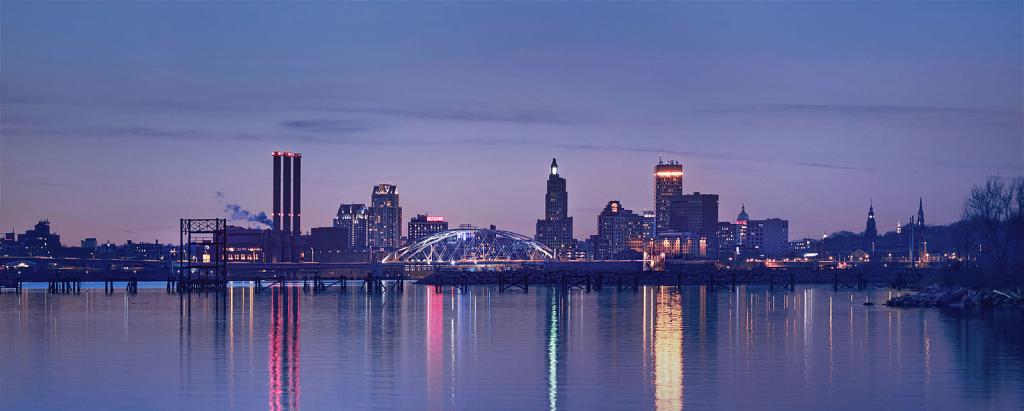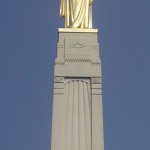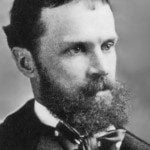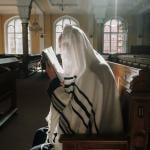
A new article — this one by Adam Stokes — appeared earlier today in Interpreter: A Journal of Latter-day Saint Faith and Scholarship:
“The People of Canaan: A New Reading of Moses 7”
Abstract: Moses 7 is one of the most famous passages in all of Restoration scripture. It is also one of the most problematic in regard to its description of the people of Canaan as black (v. 8) and as a people who were not preached to by the patriarch Enoch (v. 12). Later there is also a mention of “the seed of Cain,” who also are said to be black (v. 22). This article examines the history of interpretation of Moses 7 and proposes an alternative understanding based on a close reading of the text. In contrast to traditional views, it argues that the reason for Enoch’s not preaching to the people of Canaan stems not from any sins the people had committed or from divine disfavor but from the racial prejudice of the other sons of Adam, the “residue of the people” (vv. 20, 22) who ironically are the only ones mentioned as “cursed” in the text (v. 20). In looking at the implications of this passage for the present-day Restoration, this article notes parallels between Enoch’s hesitancy and various attitudes toward black priesthood ordination throughout the Restoration traditions, including the Community of Christ where the same type of hesitancy existed. This article argues that, rather than being indicative of divine disfavor toward persons of African descent, this tendency is a response to the racist attitudes of particular eras, whether the period of the Old Testament patriarchs or the post-bellum American South. Nevertheless, God can be seen as working through and within particular contexts and cultures to spread the gospel to all of Adam’s children irrespective of race.
[Editor’s Note: We are pleased to publish this article from an author outside The Church of Jesus Christ of Latter-day Saints, but from a related Restoration faith tradition. Adam Stokes was formerly with the Community of Christ and currently is an ordained Apostle and Elder in The Church of Jesus Christ with the Elijah Message—The Assured Way [Page 160]of the Lord. Adam notes that “while the Book of Moses is not officially part of my church’s canon, my own personal beliefs still accept the Joseph Smith translation/Inspired Version as inspired and sacred scripture and I read it often.” We are grateful for the faithful insights Elder Stokes kindly provides for the Book of Moses.]
***
Another new little article has gone up on the invaluable and health-promoting Neville-Neville Land website:
“The fraud behind Jonathan Neville’s “multiple working hypotheses””
***
And, in case that’s not enough for you this weekend, here are links to four previously published Interpreter articles:
Daniel C. Peterson, “Reckoning with the Mortally Inevitable”
Abstract: Every human enterprise — even the best, including science and scholarship — is marred by human weakness, by our inescapable biases, incapacities, limitations, preconceptions, and sometimes, yes, sins. It is a legacy of the Fall. With this in mind, we should approach even the greatest scientific, cultural, and academic achievements with both grateful appreciation and humility. J. B. Phillips’s rendition of Paul’s words at 1 Corinthians 13:12 captures the thought nicely: “At present we are men looking at puzzling reflections in a mirror. The time will come when we shall see reality whole and face to face! At present all I know is a little fraction of the truth, but the time will come when I shall know it as fully as God now knows me!”
Abstract: How does God relate to time? How do we? Modern science and revelation offer distinctive and fascinating perspectives to these questions. Specifically, the physical mechanisms underlying time have doctrinal parallels, they appear to be operative at the Fall, and they correlate with several phenomena that make God’s mercy possible.
, and “To Seek the Law of the Lord””
Abstract: This prefatory material to the festschrift for John W. Welch gives an overview of his exceptional life, full of variety and intensity. As James R. Rasband writes: “His candle burns bright whatever the project.” Hoskisson and Peterson characterize “Jack” as a “polymath” as they give a thumbnail sketch of the history of FARMS (Foundation for Ancient Research and Mormon Studies), which he founded and of the book which honors his numerous contributions. A final contribution to this installment provides a useful collection of highlights of his personal and professional life.
[Editor’s Note: Part of our book chapter reprint series, this article is reprinted here as a service to the LDS community. This single article combines three items from the original book: the Foreword, Introduction, and Biographical Highlights. Original pagination and page numbers have necessarily changed, otherwise the reprint has the same content as the original.
See “To Seek the Law of the Lord”: Essays in Honor of John W. Welch, ed. Paul Y. Hoskisson and Daniel C. Peterson (Orem, UT: The Interpreter Foundation, 2017), ix–xx. Further information at https://interpreterfoundation.org/books/to-seek-the-law-of-the-lord-essays-in-honor-of-john-w-welch-2/.]
Warren P. Aston, “Nephi’s “Shazer”: The Fourth Arabian Pillar of the Book of Mormon”
Abstract: Many Book of Mormon students are aware that several locations along Lehi’s Trail through the Arabian Peninsula now have surprising and impressive evidence of plausibility, including the River Laman, Valley of Lemuel, Nahom, and Bountiful. One specific named location that has received much less attention is Shazer, a brief hunting stop mentioned in only two verses. After reviewing the potential etymology of the name, Warren Aston provides new information from discoveries made during field work in late 2019 at the prime candidate for the Valley of Lemuel, discoveries that lead to new understanding about the path to Shazer. Contrary to previous assumptions about Lehi’s journey, Aston shows there was no need to backtrack through the Valley of Lemuel to begin the “south-southeast” journey toward Shazer. It appears that Nephi’s description of crossing the river from the family’s campsite and then going south-southeast toward Shazer is exactly what can be done from the most likely candidate for a campsite in the most likely candidate for the Valley of Lemuel. In light of fieldwork and further information, Aston also reviews the merits of several locations that have been proposed for Shazer and points to a fully plausible, even probable, location for Shazer. The account of Shazer, like Nahom, the River of Laman/Valley of Lemuel, and Bountiful, may now be a fourth Arabian pillar anchoring and supporting the credibility of the Book of Mormon’s Old World account.
Posted from Providence, Rhode Island











